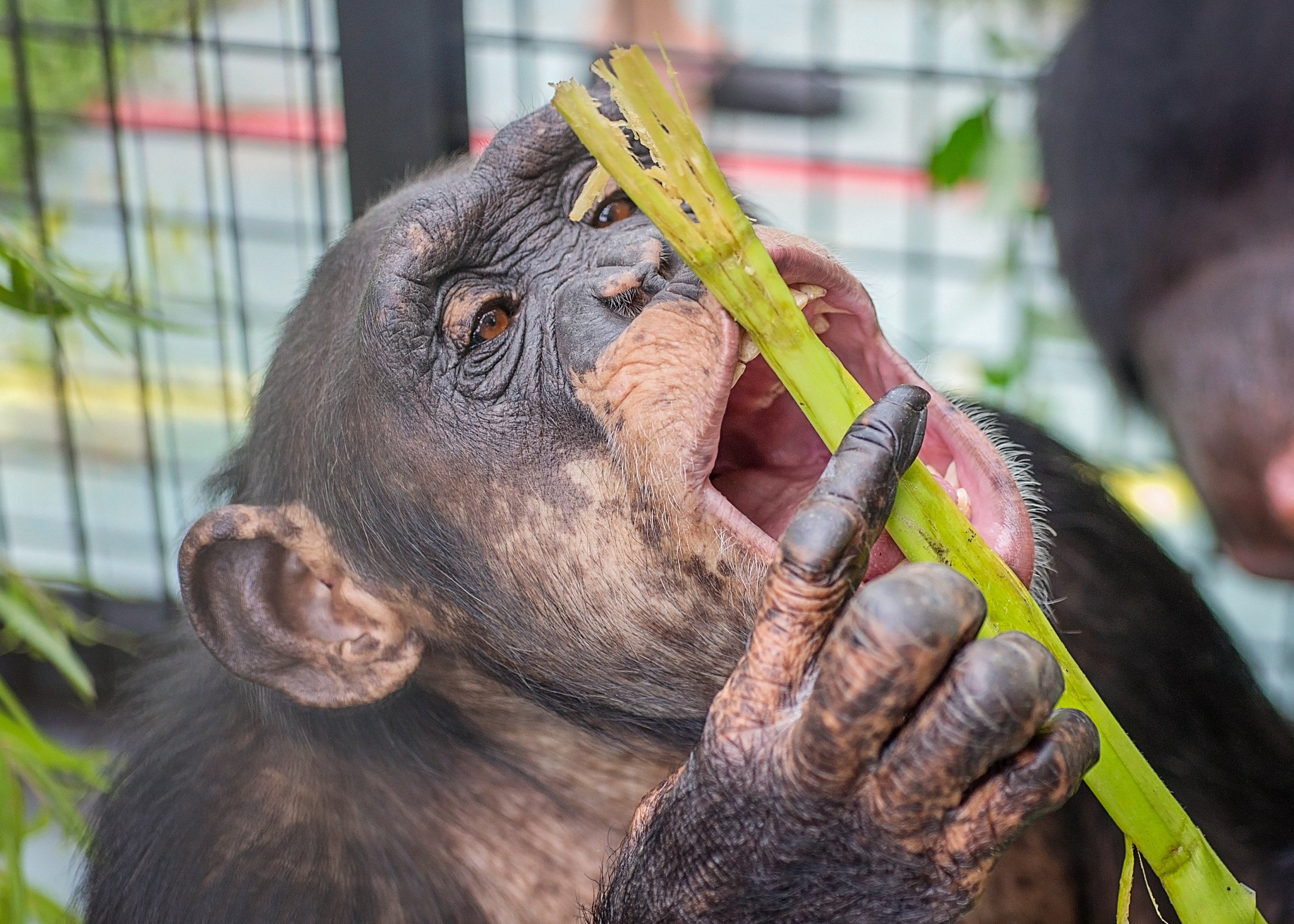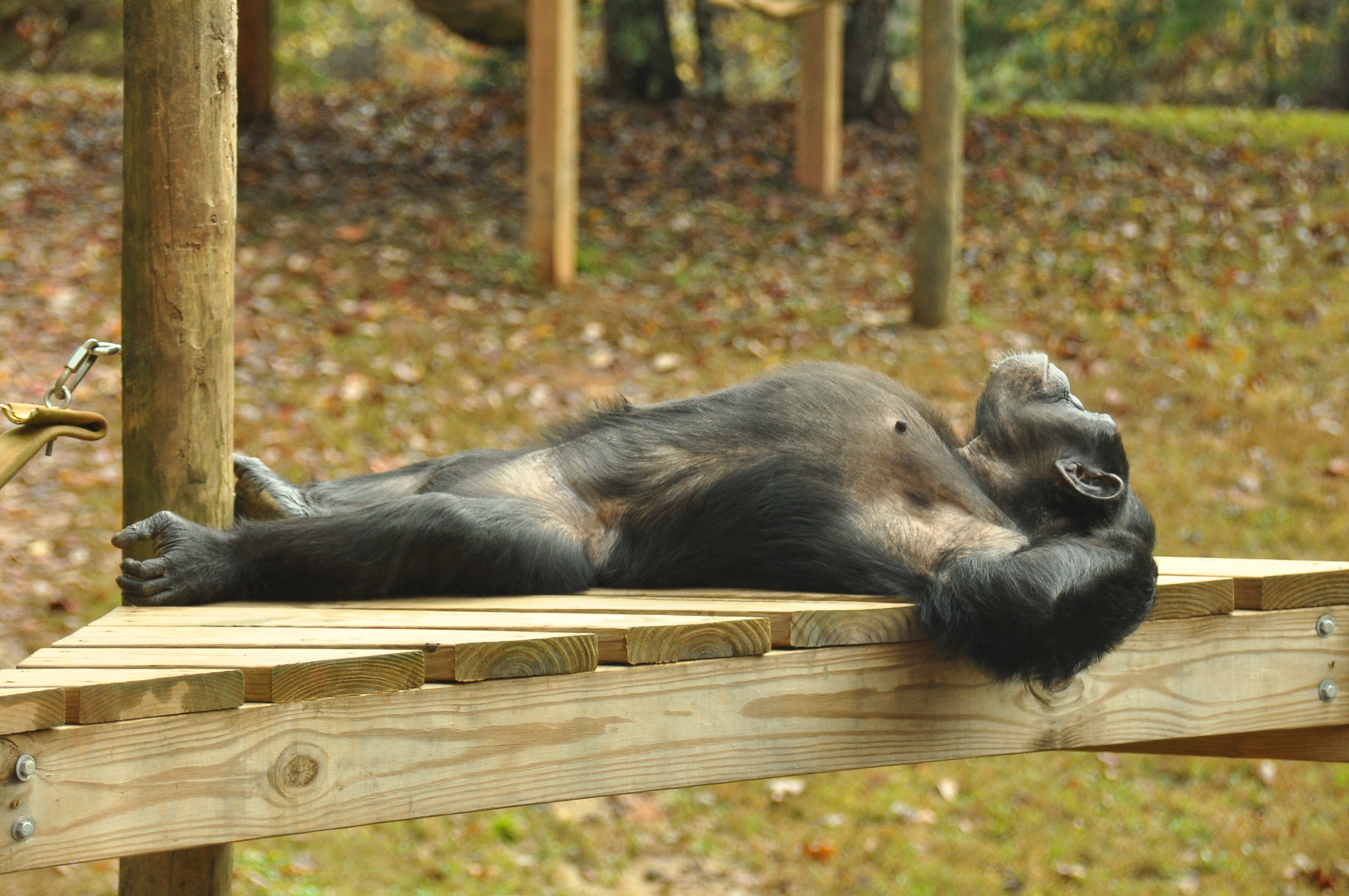Browse Donations
Feed the chimps from your garden!
Did you know each chimp consumes 6-7lbs of fresh produce each day? They also receive a serving of “browse” (tender shoots, twigs, and green leaves of trees and shrubs). Care staff also use browse as a way to add enrichment to the lives of the chimps.
How can you help? We’re always looking for fresh, healthy donations of recently trimmed or felled landscaping from our local community. Check out the list of accepted plants and FAQs below, and let us know if you’d like to coordinate a donation. We (and especially the chimps) greatly appreciate your donations!
We are able to pick up from Union or Fannin County addresses at this time. If you live outside of these areas and are willing to deliver your fresh trimmed plants, we can schedule a time and date for drop-off. Always schedule with us before you trim.
Common chimp browse plants

Chimp Chatter Blog:
FAQ about the Chimp Browse Program
What do chimps eat?
Learn more about their overall diets here and you can find the full list of approved plant material here.
Where do I take my donation?
We have a convenient drop off located at the front gate of Project Chimps. It is unlikely that you will see the chimps when you make the drop-off.
What if I sprayed my plants?
Unfortunately, we are unable to accept any portion of the plant if it has been treated, even an organic product, as it may be harmful to the chimps.
May I bring last weeks cuttings?
Just like humans, chimps love fresh fruits and veggies, so any donation must be with in 24hrs of falling or trimming.
Will you take the whole tree/everything I trim?
We only use branches with leafy greens and do not have a use for tree trunks or large sections of limb. If you are cutting a whole tree, we are happy to pick up as many branches with leaves as we can load, (if you’re close by, we can make a few trips) but we are not able to clean up and dispose of a whole tree and may not always be able to take everything you trim. One exception: if you’re digging out an entire tree, we may be interested in large root balls as natural climbing structures.
What kind of tree do I have?
There are many, many resources online to help identify trees. Take a read through the UGA Extension list of Native Plants or Arbor Day guides to help. If you’re still striking out, send a high-resolution photo to Browse@projectchimps.org, and we’ll try to help.
What size of branches will you take?
Our chimps like whole branches usually three to four feet in length. We feed our chimps by giving them the whole branch and letting them tear off leaves and smaller branches for consumption. If we are coming to your property to pick up limbs, we will bring tools to cut branches smaller if needed, so feel free to leave those limbs big!
Will you trim my tree and take the branches?
Unfortunately, no. We are not licensed tree trimmers and cannot take on the liability for harming your tree or damaging your property.
Will you take freshly harvested produce?
Absolutely! In addition to browse, we would love to receive freshly harvested surplus produce if your garden or orchard is overproducing. The chimps can be picky about their fruits and veggies, so if it has started to spoil and you won't eat it, neither will they! But they will eat more of the plant than we will. Corn stalks, squash vines, and the rest of the plant we usually leave behind is good browse for them!
Browse Donations

Won't You Help?
This project would not be possible without our many generous individual supporters and volunteers. We rely on donations to fulfill our mission, including caring for our existing residents and expanding the sanctuary to accommodate those chimpanzees still waiting in the lab.
Won’t you help us bring the remaining chimps to sanctuary by supporting Project Chimps today? Please donate today because...










